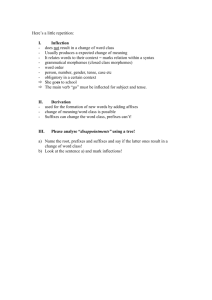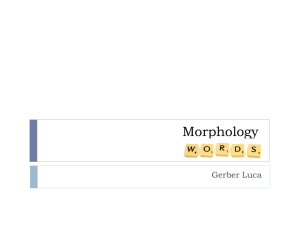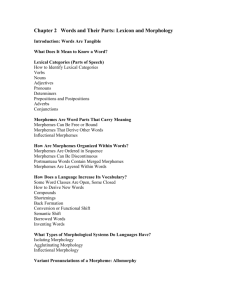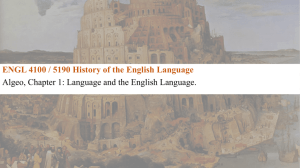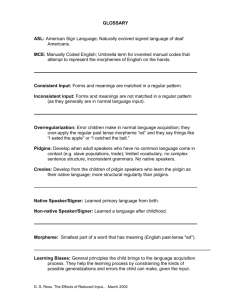Introduction to Linguistics - An
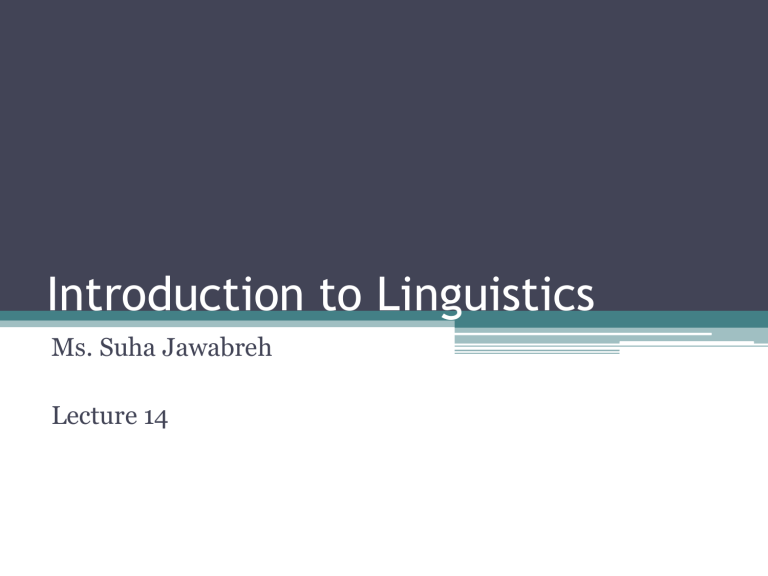
Introduction to Linguistics
Ms. Suha Jawabreh
Lecture 14
The Components of Language
1. Sounds – Phonetics and Phonology
2. Words – Morphology
3. Phrases and sentences- Syntax
4. Meaning- Semantics and Pragmatics
What is Morphology?
Morphology, in linguistics, is the study of the forms and the structure of words.
- Word-forms may consist of elements.
-Example : tourists = tourists reopened = reopened
- We call these elements : morphemes .
What is a morpheme ?
A morpheme is a minimal unit of meaning or grammatical function.
Decide how many morphemes the following words have.
1. walking
2. Faithfulness
3. Disrespectful
4. Incomplete
5. Taken
6. Teachers
7. Helplessly
8.Beautiful
9. Faster
10 unhappiest
Types of morphemes
There are two types of morphemes:
1. Free morphemes : morphemes which can stand by themselves as single words.
E.g. Open , tour
2. Bound morphemes: morphemes what can NOT stand alone . (all affixes are bound morphemes in
English)
E.g. –ist , -ful, un-
What is the stem?
-The stem is the basic word-form.
-Identify the stems in the question in the previous slide.
- Are all stems free morphemes?
Types of free morphemes
1. Lexical morphemes.
They are words which carry ‘content’ of messages we convey.
E.g. Look, follow, yellow, break, house boy.
- We can add new lexical morphemes to the language easily, so they are treated as open class of words.
2. Functional morphemes.
They consist of conjunctions, prepositions, articles and pronouns.
E.g. But, when, because, on, a, near, she, they.
- We almost never add new functional morphemes to the language; they are describes as a closed class of words.
Types of bound morphemes
1. Derivational morphemes.
-They are used to make new words in the language and often change the grammatical category of the stem.
Example : care (n.)+ less = careless (adj.) good (adj.)+ness= goodness (n.)
-less and –ness are derivational morphemes.
2. Inflectional morphemes.
-They are NOT used to produce new words in
English, but rather to indicate aspects of grammatical function of a word.
- Inflectional morphemes are used to show if the word is
1. plural or singular
2. past tense or not
3. a comparative or possessive form
- All inflectional morphemes in English are suffixes.
- English has eight inflectional morphemes:
Noun + ‘s , -s
Verb + -s, -ing, -ed,-en
Adjective + -est , -er
Study questions on page 82 in the textbook.



